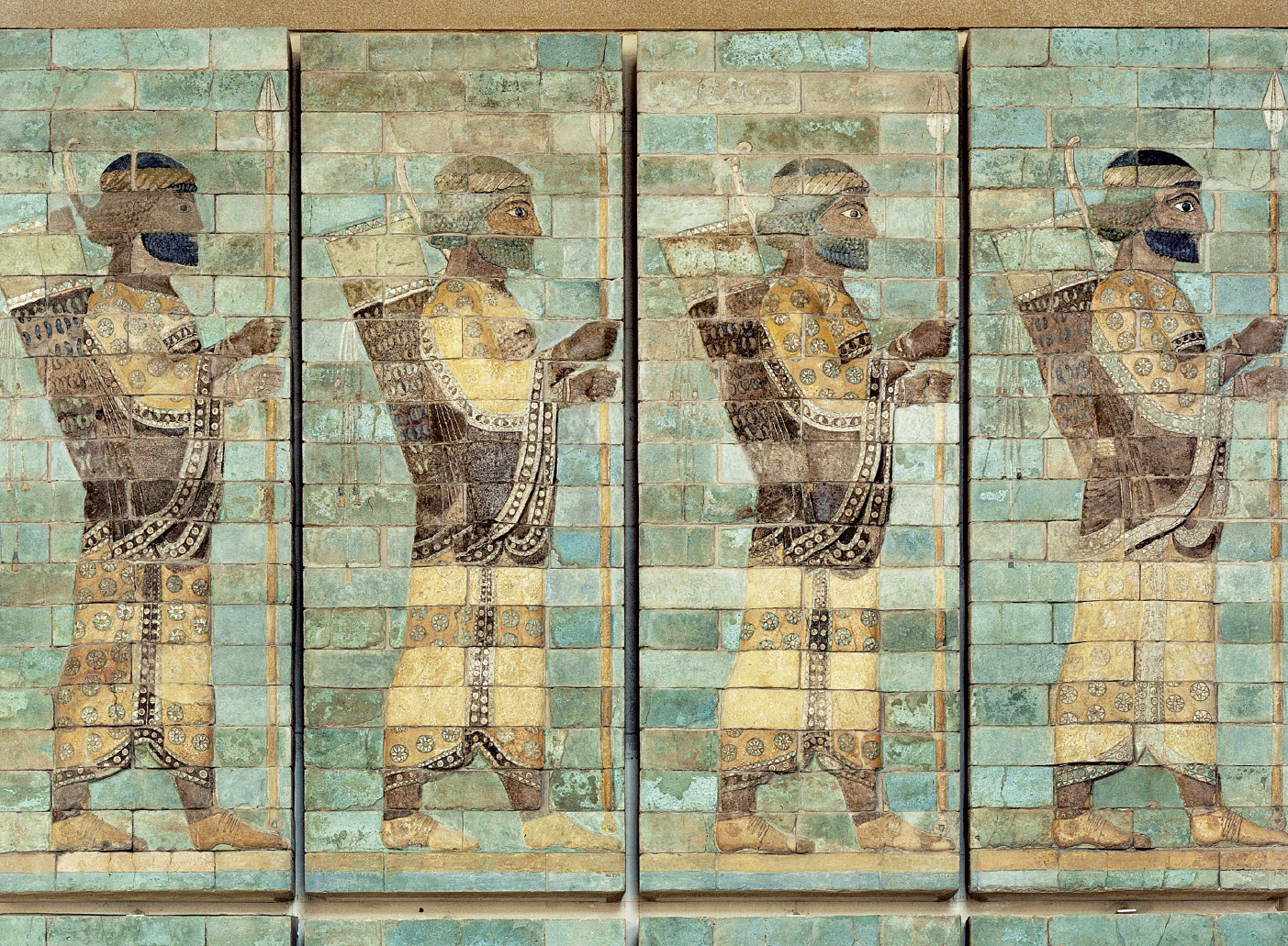Introduction for Chapter 2
2 Small Kingdoms and Mighty Empires in the Near East
1200–510 B.C.E.
The migrations, drought, and destruction of what scholars call the “Bronze Age Collapse” in the late thirteenth century B.C.E. ended the Hittite Empire and weakened the Egyptians. Much was lost, but the old cultures of the ancient Near East survived to nurture new societies. The technology for smelting iron, which developed in Anatolia as well as other places in the world, improved and spread, with iron weapons and tools becoming stronger and thus more important by about 1000 B.C.E. In the absence of powerful empires, the Phoenicians, Kushites, Hebrews, and many other peoples carved out small independent kingdoms until the Near East was a patchwork of them. The Hebrews created a new form of religious belief with a single god and wrote down their religious ideas and traditions in what later became the most significant written document from this period.
In the tenth century B.C.E. this jumble of small states gave way to an empire that for the first time embraced the entire Near East: the empire of the Assyrians. They assembled a huge army that used sophisticated military technology and brutal tactics, and also developed effective administrative techniques and stunning artistic works. The Assyrian Empire lasted for about three hundred years and then broke apart with the rise of a new empire centered in Babylon. Beginning in 550 B.C.E. the Persians conquered the Medes — nomadic peoples who had settled in Iran — and then the Babylonians and Assyrians, creating the largest empire yet seen, stretching from Anatolia in the west to the Indus Valley in the east. The Persians established effective methods of governing their diverse subjects and built roads for conquest, trade, and communication. ■

CHAPTER PREVIEW
Iron and the Emergence of New States
How did iron technology shape new states after 1200 B.C.E., including Kush and Phoenicia?
The Hebrews
How did the Hebrews create an enduring religious tradition?
Assyria, the Military Monarchy
What explains the rise and fall of the Assyrians?
The Empire of the Persian Kings
How did the Persians consolidate their power and control and influence the subjects of their extensive empire?
Chronology
| ca. 1200 B.C.E. | “Bronze Age Collapse”; end of the Hittite Empire |
| ca. 1100 B.C.E. | Beginning of the Iron Age; Phoenicians begin to trade in the Mediterranean |
| ca. 1070–712 B.C.E. | Third Intermediate Period in Egypt |
| ca. 965–925 B.C.E. | Hebrew kingdom ruled by Solomon |
| 911–609 B.C.E. | Neo-Assyrian Empire |
| 727 B.C.E. | Kushite Dynasty established in Egypt |
| 722 B.C.E. | Kingdom of Israel destroyed by the Assyrians |
| 626–539 B.C.E. | Neo-Babylonian empire |
| ca. 600 B.C.E. | Ideas of Zoroaster gain prominence in Persia |
| 587 B.C.E. | Kingdom of Judah destroyed by the Neo-Babylonians |
| 587–538 B.C.E. | Babylonian Captivity of the Hebrews |
| 550 B.C.E. | Cyrus the Great conquers the Medes and consolidates the Persian Empire |
| 539 B.C.E. | Persians defeat the Neo-Babylonians |
| 525 B.C.E. | Persians defeat the Egyptians and Nubians |